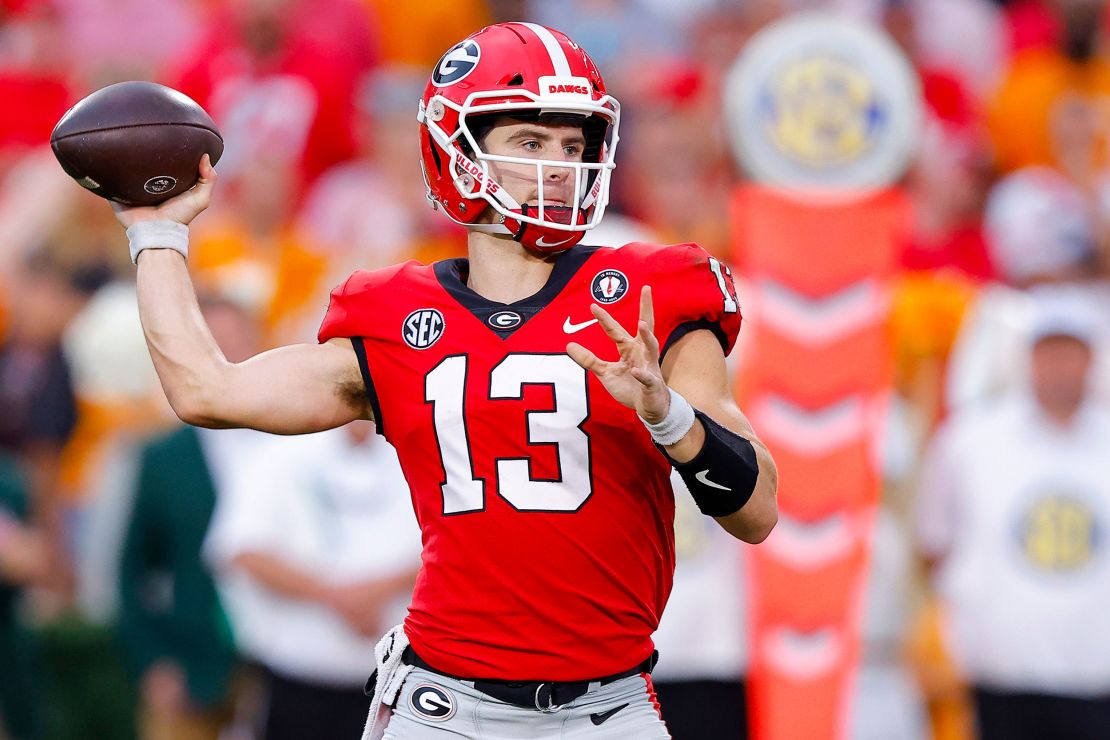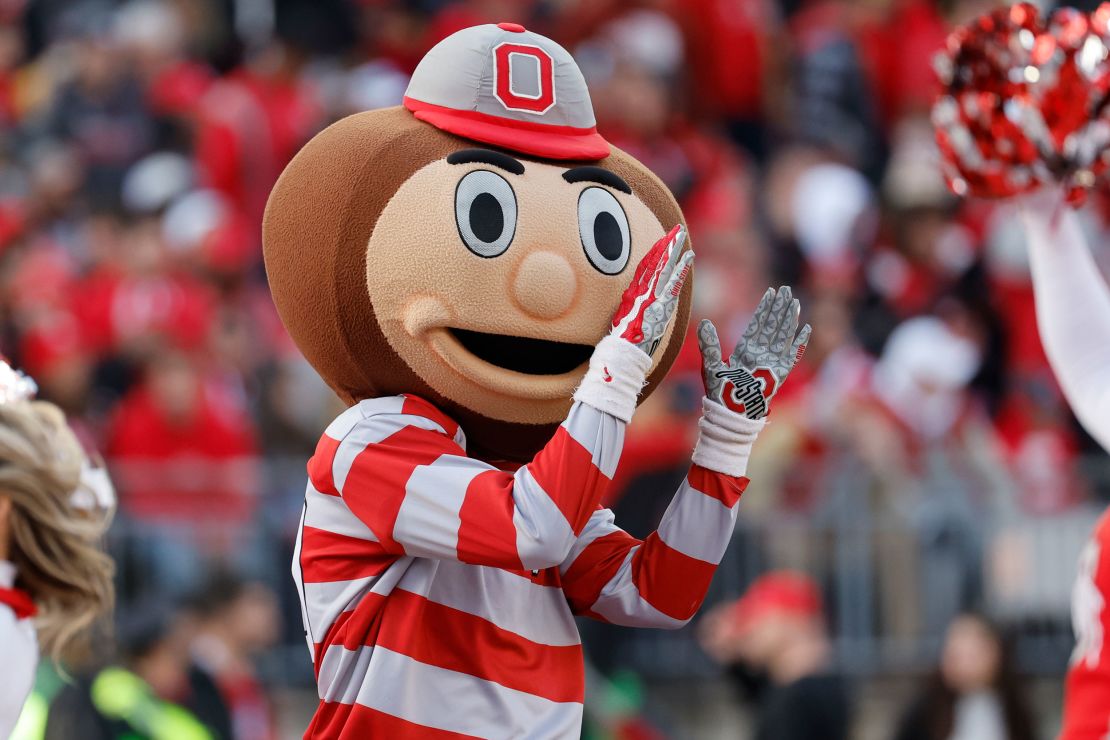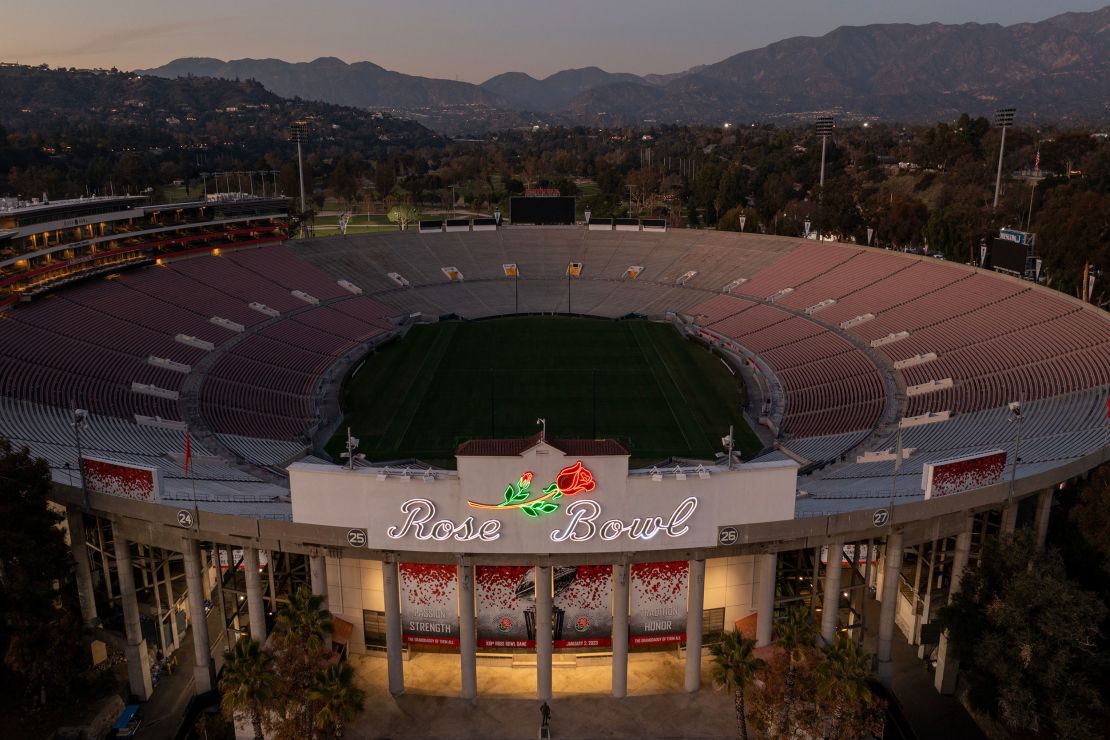Don’t have any New Year’s plans? Yes you do! The NCAA College Football Playoff games are on, and nothing says “glamor” or “party time” like eight straight hours of televised sports. Plus, the two semifinal games on December 31 will determine the match-up for the College Football Playoff Championship game on January 9, and you don’t want to miss any important lore. Here’s everything you could possibly want to know to enjoy this year’s playoffs events.
What time and where are the College Football Playoff games?
Saturday, December 31:
- No. 2 Michigan will face No. 3 TCU in the Fiesta Bowl in Glendale, Arizona. The game starts at 4 p.m. ET on ESPN.
- No. 1 Georgia will face No. 4 Ohio State in the Peach Bowl in (where else?) Atlanta. The game starts at 8 p.m. ET on ESPN.
The winners of these games will meet Monday, January 9 at SoFi Stadium in Inglewood, California for the Championship game.
Are there seriously only four teams in the playoffs?
This isn’t the World Cup, okay? The College Football Playoff structure is still relatively new (we’ll talk about that later) and while the brackets will probably expand later, four is all we get now. At least they’re easy to keep track of. Let’s meet them:
No. 1: The Georgia Bulldogs
School: The University of Georgia in Athens, Georgia
Conference: SEC
Claim to fame: They’re the reigning national champions, an unstoppable force, and at No. 1, are the favorites to win it all again
Strength of mascot: 8/10. “Go Dawgs” has a nice ring to it (or a spooky ring, if you are, say, not a Georgia fan yet live within a 250 mile radius of the Atlanta metropolitan area). They also have a live bulldog mascot, Uga, who always looks tired and concerned. Very relatable. Would you want to fight an actual bulldog? Probably not, because that seems cruel.
Strength of color combo: 10/10. You can’t go wrong with black and red, the classic colors of strength and violence.
Player to know: Quarterback Stetson Fleming Bennett IV, whose name sounds like it was spit out by an AI trained on 19th century British peerage and characters from “Yellowstone.” Bennett was a Heisman Trophy finalist this year, the highest personal honor for a college football player. He’s also 25. College football!

No. 2: The Michigan Wolverines
School: The University of Michigan in Ann Arbor
Conference: Big Ten
Claim to fame: Tom Brady played there, as did current coach Jim Harbaugh.
Strength of mascot: 8/10. Wolverines are described as “solitary” and “muscular” animals, which is a weird set of adjectives, but good for football purposes assuming they can build up some teamwork skills. Even the University of Michigan itself isn’t really sure why they’re called the Wolverines, which lends an air of chaotic mystery to the whole thing. Would you want to fight an actual wolverine? No, they seem very mean.
Strength of color combo: 6/10. Blue and gold/yellow is another classic color combo, but it’s been done in punchier, more powerful ways. However, points for the school’s official yellow shade, which is called “Michigan Maize.”
Player to know: Running back Blake Corum. He sufferd a meniscus tear earlier this season, and won’t be playing in the postseason. But you can still sound smart during the game by shaking your head over what a shame it is that Corum will miss the opportunity and wondering out loud whether he’ll return to Michigan when he’s all better, or head straight to the NFL draft.
No. 3: The TCU Horned Frogs
School: Texas Christian University in Forth Worth
Conference: Big 12
Claim to fame: I dunno
Strength of mascot: 6/10. Listen, we love a unique mascot. Horned frogs? So Texas. Apparently the mascot originated from an old legend that, in the early days of the school’s football program, the football field was once covered in the little guys. Would you want to fight an actual horned frog? Of course not. One-on-one just wouldn’t be a fair fight, and going up against a whole football field’s worth would be a bit too biblical. You definitely don’t want to fight the person in the horned frog mascot costume, either. Imagine this being the last thing you saw in your earthly life:

Strength of color combo: 8/10. Purple is always a nice palette change, and they do some fun horned frog-inspired motifs.
Player to know: Quentin Johnston, who’s one of the best wide receivers in the country. 247 Sports describes him as “an incredibly bouncy athlete” which makes a lot more (well, a little more) sense when you learn he also excelled at basketball and high jump.
No 4: The Ohio State Buckeyes
School: Ohio State University in Columbus
Conference: Big Ten
Claim to fame: They won the first College Football Playoff National Championship in 2014. They also have one of the most intense fan bases in college football, and you can identify them because they’re the ones insisting it’s “THE Ohio State.”
Strength of mascot: 3/10. It’s a buckeye. A NUT, for goodness’ sake. Or a delicious regional treat, if you’re talking about the chocolate-dipped peanut butter balls. Either way, you wouldn’t ever have reason to fight a buckeye. But you’d definitely win. (Not if it was the on-field mascot, though. Brutus the Buckeye is terrifying. Not in a “titan of college sport” way, but more of a “sleep paralysis demon” way.)

Strength of color combo: 4/10. Technically OSU’s colors are gray and scarlet, but on the field they’re basically white and red.
Player to know: Quarterback CJ Stroud, who’s already being touted as a top NFL draft pick for next year. He is a two-time Heisman finalist, and has collected all sorts of other accolades during his time at Ohio State.
How can there only be four teams in a playoff?
The College Football Playoff National Championship system is still fairly new. Before 2014, the college postseason system was called the Bowl Championship Series. That consisted of several postseason bowl games, with the top teams competing in the BCS National Championship game. The BCS was not popular because the method of choosing the teams to compete was frustrating and opaque. The NCAA used a few different ranking polls and computer algorithms to determine which teams played which, and where. Now, under the College Football Playoff model, things are a little bit simpler.
How are the teams picked now?
It all comes down to the discernment of Harold the Playoff Wombat. Near the end of every football season, NCAA officials visit Harold in his habitat outside of Indianapolis and present him with a display of identical, equidistant boiled eggs. Each egg bears the name of a top-ranked school and the first four eggs Harold consumes determine the teams and order of the playoff slate.
Very funny. How are the teams ACTUALLY chosen?
The NCAA turns to a 13-member selection committee made up of professional college football experts. Using metrics like ranking polls, win record and schedule strength, the members vote on the four top teams.
However, there are still a whole host of other bowl games for the top finishers in the different football conferences. So just because your team misses the playoff doesn’t meant they can’t win honor and glory in, say, the Union Home Mortgage Gasparilla Bowl.
Why are they called bowl games, anyway?

It can’t simply be because football stadium are shaped like bowls! Where would the comparisons end? The NFL Super Roomba? The College Football Playoff Bathtub?
(It actually is because they’re shaped like bowls.)

